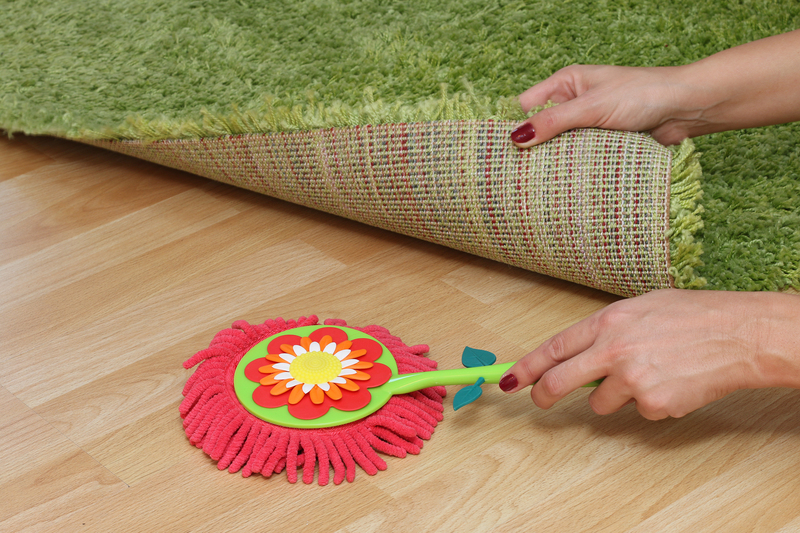Your Go-To Guide for Cleaning Persistent Burnt Stovetop Residue
Posted on 19/05/2025
Your Go-To Guide for Cleaning Persistent Burnt Stovetop Residue
Burnt-on residue on stovetops can be a real eyesore and a stubborn challenge for even the most dedicated home cleaners. Whether you're dealing with spills that turned into carbonized patches or old stains that seem impossible to remove, rest assured--help is at hand! In this comprehensive guide, we'll help you restore your cooktop to its sparkling best with practical tips, expert techniques, and product recommendations. If you've struggled with persistent burnt stovetop residue, this is your ultimate go-to resource.
Understanding Burnt Stovetop Residue
Before you tackle the mess, it's important to know what you're up against. Burnt stovetop residue is essentially food spills or drips that have been exposed to high heat, causing them to carbonize and "bake" onto your stovetop's surface. Gas, electric, ceramic, or induction--each type of stove can accumulate stubborn build-up if not promptly cleaned.
- Common causes: boiling over liquids, frying spills, sugar-based sauces, and neglecting quick clean-ups after cooking.
- Risks of leaving residue: lingering odors, impaired efficiency of burners or heating elements, and potential scratching when the residue is eventually removed.
Why Immediate Action Matters
Timely cleaning can save both your time and your stovetop's finish. Fresh spills are much easier to wipe up than baked-on gunk. However, life happens, and sometimes we miss a spot that only becomes apparent days--or recipes--later. That's when you need to know the right methods for cleaning tough burnt stovetop stains.

Essential Supplies for Cleaning Burnt Stovetop Residue
Preparation is half the battle. Gather the following supplies for a comprehensive cleaning session:
- Soft cloths or microfiber rags
- Non-abrasive scrub pads
- Baking soda
- White vinegar
- Lemon juice (optional)
- Plastic scraper or old credit card
- Stovetop-safe degreaser or cream cleanser
- Sponge
- Warm, soapy water
- Gloves
Note: For induction and ceramic glass cooktops, always use manufacturer-approved products and tools to avoid scratching the surface.
Step-by-Step Guide to Removing Burnt Residue from Your Stovetop
Step 1: Assess Your Stovetop
- Is it gas, electric, or induction?
- Does the residue cover one burner or more?
- Are there grates or removable pieces involved?
This will help you understand whether you need to remove grates or elements before starting.
Step 2: Initial Wipe Down
Start by clearing away all loose crumbs and debris. Use a dry cloth or paper towel to wipe the surface. Removing the removable grates or burner covers (for gas stoves) is recommended. Wash these in warm, soapy water and let them soak while you address the stove surface.
Step 3: Soften the Burnt Residue
This is a crucial stage for stubborn burnt-on messes. The goal is to loosen the bonds between the residue and the stovetop, making removal easier without excessive scrubbing.
- Soaking method: Lay a towel soaked in warm or hot water over the affected area for at least 15 minutes. For extra cleaning power, add a few drops of dish soap to the water.
- Natural approach: For extra-tough spots, sprinkle baking soda generously over the residue and spray with white vinegar. The resulting fizz helps to lift grime. Allow this to sit for 15-30 minutes.
Step 4: Gently Scrape and Scrub
Once the residue is softened, use a non-abrasive scrub pad or a plastic scraper to gently work away at the burnt spots. Avoid metal tools, which can scratch delicate finishes, especially on glass or enamel surfaces.
- For glass stovetops, use a special glass scraper held at a 45-degree angle for stubborn marks.
- On gas ranges, pay attention to the area around the burners, as build-up here can affect performance.
Step 5: Apply a Cleaning Solution
With the bulk of the grime gone, use a stovetop-safe cleaner or a paste made from baking soda and water. Work the product into the surface using a damp (not wet) cloth, applying extra attention to remaining residue. For shiny finishes, a drop of lemon juice can add extra degreasing action and leave a fresh scent.
Step 6: Final Rinse and Buff Dry
Wipe away any cleaner residue with a clean, damp cloth. Go over the surface once more with a dry microfiber towel to prevent streaks or water spots. Replace all grates or elements once the stovetop is completely dry.
Specialized Tips for Different Stovetop Types
Gas Stovetops
- Remove grates and burner caps before cleaning. Soak them in soapy water to loosen grease and burnt-on food.
- Use a toothbrush for hard-to-reach crevices around burners.
- Be sure to thoroughly dry parts before replacing to prevent rust and ensure proper ignition.
Electric Stovetops
- If you have removable coils, unplug and clean them separately (never immerse in water).
- For non-removable elements, gently wipe with a damp cloth when completely cool.
- The drip pans beneath can often be removed and cleaned or replaced if heavily soiled.
Glass or Induction Cooktops
- Always use non-abrasive materials; scratches can mar the look and function of the surface.
- A specialty glass cooktop cleaner can be buffed in with a microfiber cloth for a high-gloss finish.
- For really persistent burnt-on food, use a razor blade scraper (specifically designed for glass) at a shallow angle with gentle pressure.
Effective Natural Cleaning Solutions for Stubborn Burnt-On Stovetop Messes
Prefer to avoid harsh chemicals? There are several natural solutions that are surprisingly effective for tough burnt stovetop residue:
- Baking soda and vinegar paste: The classic combination. Baking soda acts as a gentle abrasive, while vinegar breaks down grease and stains.
- Lemon juice and salt scrub: Perfect for brightening enamel and gently scouring residue.
- Hydrogen peroxide and baking soda: For extremely stubborn spots, make a paste, apply, and let it sit for 10-15 minutes before scrubbing.
Preventing Future Buildup: Pro Tips
- Clean spills promptly. Wipe up any splatters as soon as your stovetop cools. This is the easiest way to avoid persistent buildup.
- Use burner liners or drip pans where applicable. These catch spills and are easier to clean or replace.
- Deep-clean your stovetop weekly. Even if it looks clean, microscopic residue can accumulate over time. Reluctant grime comes off easily with regular maintenance.
- Avoid abrasive cleaning products which can scratch or dull the surface.
- Polish to finish. After cleaning, a final polish with a dedicated stovetop product can repel future stains and make routine cleaning a breeze.
Common Mistakes to Avoid When Cleaning Persistent Burnt Stovetop Stains
- Scrubbing with steel wool or harsh pads: These can permanently scratch most stovetop finishes.
- Using excessive water around electric burners: This can cause electrical issues or rust.
- Ineffective cleaning products: Avoid using oven cleaners or other heavy-duty chemicals unless specified by your stove's manufacturer.
- Not allowing the stovetop to cool: Cleaning a hot cooktop can result in burns or cracked surfaces, especially on glass.
Recommended Cleaning Products for Removing Hard Burnt Stovetop Residue
While DIY solutions are great, sometimes you need a little extra help. Here are several top-rated cleaning products trusted by home care experts:
- Cerama Bryte Cooktop Cleaner: Specially designed for glass and ceramic surfaces.
- Bar Keepers Friend: A versatile powder cleaner for most stovetop surfaces (always check compatibility).
- Weiman Cooktop & Stove Cleaner: Popular for its streak-free finish and powerful cleaning ability.
- Magic Eraser: Great for spot cleaning. Use gently on appropriate surfaces.
What to Do With Particularly Persistent Burnt-On Stovetop Residue?
*If you've followed all the basic steps and still see tough, blackened patches, don't worry--you still have options:
- Repeat the soaking and scrubbing process. Persistence often pays off.
- Try a more potent commercial degreaser. Always test in a small area first.
- Consult your stovetop's manufacturer website for guidance--some surfaces have recommended special methods or products.
- For old or damaged stovetops: It may be time to consider replacement parts. New grates, burner covers, or drip pans can make a world of difference.
When to Seek Professional Help
If your stovetop's burnt-on residue refuses to budge or if you're concerned about damaging a particularly expensive or delicate surface, don't hesitate to call in a professional cleaning service. They have access to industrial-grade products and tools that can tackle even the most persistent buildup safely and effectively.

FAQs About Cleaning Burnt Stovetop Residue
Q: Can I use oven cleaner on my stovetop?
A: Oven cleaning sprays are generally too harsh for most stovetops, especially glass and enamel surfaces. Stick to gentler products or those specifically formulated for your appliance.
Q: How can I avoid re-burning food onto my stovetop?
A: In addition to cleaning up promptly, use lids to minimize splatter, and cook at moderate temperatures when possible.
Q: Will vinegar harm my stovetop?
A: White vinegar is safe for most stovetops, but always check your manufacturer's recommendations. Rinse thoroughly after cleaning to avoid residue build-up.
Q: Should I clean my stovetop every day?
A: It's a great habit to give a quick wipe daily or after heavy cooking sessions. Deep cleaning once a week is usually sufficient for most households.
Conclusion: A Spotless Stovetop is Within Reach!
Persistent burnt stovetop residue can be tough, but armed with the tips, tools, and techniques in this guide, you'll have your kitchen looking (and feeling) fresh again in no time. Remember, regular maintenance is the best line of defense against future messes, and there's no shame in enlisting professional help when needed. Clean smart, cook happy, and enjoy your sparkling, residue-free stovetop!





